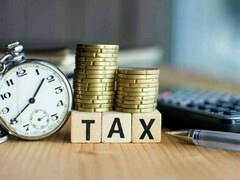FORT COLLINS, (Colo.): A good portion of US corn is in the sensitive pollination period under largely supportive weather after a shaky start to the season. Soybeans are not in the best of shape, but their most critical period for yield is approaching and the forecast has turned drier.
Current US crop conditions suggest that strong upside to yields is the less likely outcome, but average-rated crops can surprise in the end if weather cooperates through August. Many areas of the Corn Belt received decent rain in the last couple weeks after a parched June, though the forecast once again holds uncertainty.
As of Sunday, some 65percent and 59percent of US corn and soybeans, respectively, were considered in good or excellent condition by the US Department of Agriculture. On the flip side, only 8percent of corn was considered poor or very poor compared with 11percent of soybeans.
Crop conditions can sometimes be an early indicator of possible yield outcomes, but the current ratings are in a middle ground situation where comparable numbers in past years have led to a variety of results. That is especially good news for soybeans as 59percent good-to-excellent is the week's third worst of the past decade.
USDA's current trend-line yield of 50.8 bushels per acre (bpa) for the US soybean crop is relatively less aggressive than the record 179.5 bpa for corn. That would be the second-best soybean result behind 2016, though yield has topped 50 bpa an additional two times.
SOYBEANS
The very best US soybean crops, such as 2016 and 1994, have coincided with early July conditions well above 59percent. However, there have been some moderately successful ones such as 2005, 2006 and 2017 where crop health was mediocre at this point.
Identical conditions of 59percent were observed in the same week in both 1995 and 2008, but the latter featured the third driest Midwest August in 126 years of data. Weather was not great in 1995 either and both harvests were disappointing.
The performance of these very average rated crops ultimately came down to rainfall, but timeliness rather than quantity seemed to be the bigger factor. For later-planted harvests like 1996, adequate rains in September after a dry August led to slightly above-average yields.
Midwest rains in August 2005 were slightly above average, and that followed a dry July. The quickly planted crop beat early yield expectations despite being rated 54percent good or excellent at this same point.
The 2021 crop was planted quicker than normal and 10percent had begun setting pods as of Sunday. That is identical to both the same date last year and the five-year average, though it is ahead of most historical years. That means that the end of July through most of August will be the most crucial time for rain.
Weather models as of midday Thursday continue to suggest hot and dry weather for many areas at the end of July, specifically in the west, and that has generally supported Chicago futures this week. The US Climate Prediction Center (CPC) on Thursday indicated a neutral bias for August precipitation in most of the production areas.
























Comments
Comments are closed.